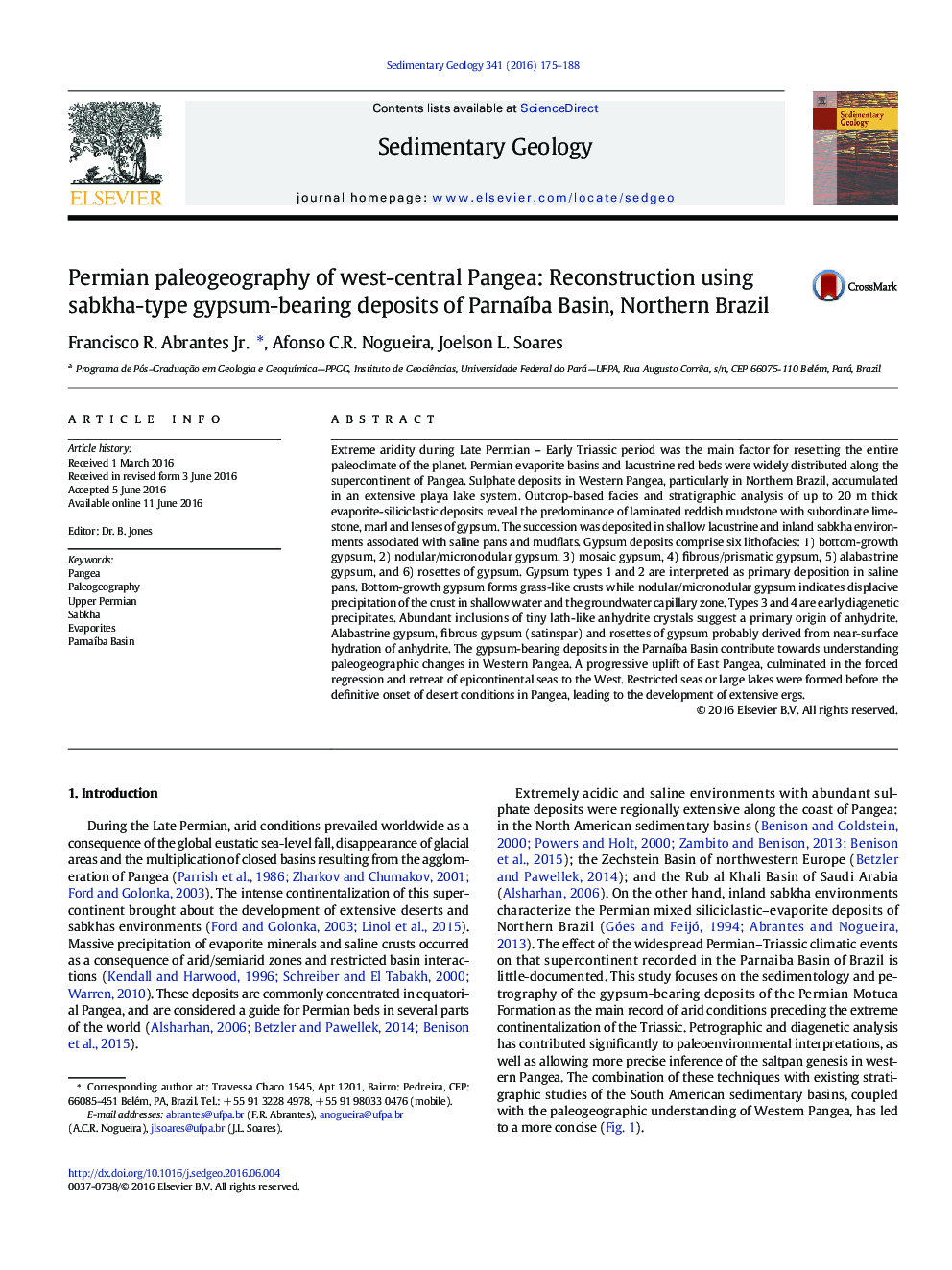| کد مقاله | کد نشریه | سال انتشار | مقاله انگلیسی | نسخه تمام متن |
|---|---|---|---|---|
| 4689011 | 1636022 | 2016 | 14 صفحه PDF | دانلود رایگان |

• Permian deposits in the Parnaíba Basin recorded extreme desertification processes.
• Inland sabkha settings occurred in Western Pangea.
• A belt of confined evaporitic basins occurred along Western Pangea.
• Permian extremely arid conditions hindered the flourishing of terrestrial plants.
Extreme aridity during Late Permian – Early Triassic period was the main factor for resetting the entire paleoclimate of the planet. Permian evaporite basins and lacustrine red beds were widely distributed along the supercontinent of Pangea. Sulphate deposits in Western Pangea, particularly in Northern Brazil, accumulated in an extensive playa lake system. Outcrop-based facies and stratigraphic analysis of up to 20 m thick evaporite-siliciclastic deposits reveal the predominance of laminated reddish mudstone with subordinate limestone, marl and lenses of gypsum. The succession was deposited in shallow lacustrine and inland sabkha environments associated with saline pans and mudflats. Gypsum deposits comprise six lithofacies: 1) bottom-growth gypsum, 2) nodular/micronodular gypsum, 3) mosaic gypsum, 4) fibrous/prismatic gypsum, 5) alabastrine gypsum, and 6) rosettes of gypsum. Gypsum types 1 and 2 are interpreted as primary deposition in saline pans. Bottom-growth gypsum forms grass-like crusts while nodular/micronodular gypsum indicates displacive precipitation of the crust in shallow water and the groundwater capillary zone. Types 3 and 4 are early diagenetic precipitates. Abundant inclusions of tiny lath-like anhydrite crystals suggest a primary origin of anhydrite. Alabastrine gypsum, fibrous gypsum (satinspar) and rosettes of gypsum probably derived from near-surface hydration of anhydrite. The gypsum-bearing deposits in the Parnaíba Basin contribute towards understanding paleogeographic changes in Western Pangea. A progressive uplift of East Pangea, culminated in the forced regression and retreat of epicontinental seas to the West. Restricted seas or large lakes were formed before the definitive onset of desert conditions in Pangea, leading to the development of extensive ergs.
Journal: Sedimentary Geology - Volume 341, 15 July 2016, Pages 175–188